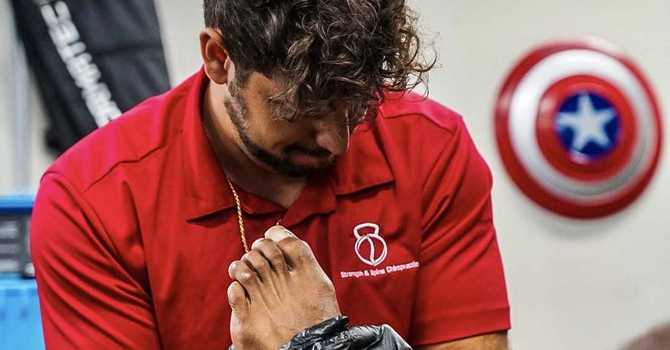Ankle Sprain/Strains are common injuries that occur in all populations
Ankle sprain/strains happen to athletes, kids, and general populations very frequently. They can occur from inverting (moving in) or everting (moving out) too fast or with too much force such as tripping on a curb or slipping in a high-heel. Most individuals don't realize Chiropractors can absolutely diagnose and treat ankle injuries appropriately. After an acute ankle injury, it is very important to get a proper examination and diagnosis to determine the extent of the injury and if further diagnostic imaging is necessary.
Ankle SPRAINS are injuries that occur to the LIGAMENTS of the ankle.
Ankle STRAINS are injuries that occur to the muscles or tendons of the ankle.
With excessive force, it can result in both an ankle sprain and ankle strain. Unfortunately, it may also result in ankle fractures or avulsion fractures. Henceforth why it is important to seek care to determine the proper course of treatment.
What Does an Ankle Sprain/Strain Look Like?
The most common concern in ankle injuries is "Is my ankle broken?"
When an acute ankle injury occurs, you may notice some immediate or delayed bruising, swelling, warmth, redness, and potential throbbing pain. Depending on the severity, it may occur instantly or within a few hours. You also may or may not be able to bare weight or walk comfortably following an ankle injury.
Ankle sprains and ankle strains are treated in the office utilizing appropriate techniques:
- Soft tissue techniques to help with the pain and tightness surrounding the ankle
- IASTM to help flush out swelling and edema
- Kiniseotaping to help with support and swelling
- Physical rehabilitation to ensure the return of proper movement and strengthening of the ankle
Achilles Pain
Achilles tendon pain can limit your physical and daily activities.
The Achilles tendon connects the gastrocnemius and soleus muscles to the calcaneus. It is the strongest tendon in the body and once injured, can result in a chronic tendon issue that affects your physical and daily activities. Achilles pain will be felt either at the insertion of Achilles near the heel or higher on the Achilles tendon. A strain of the Achilles will result in pain and weakness when plantarflexing (think stepping on the gas pedal) and usually results from an explosive movement and feeling a "pop".
Achilles tendinitis will feel more like a pinpoint pain at the insertion of the Achilles that is worse using it. This is from rapid load increases such as increasing your miles or speed while running, playing more pickleball than normal, or more walking uphill than usual.
Both Achilles Strains and Achilles Tendinitis can be treated very effectively with conservative management.





